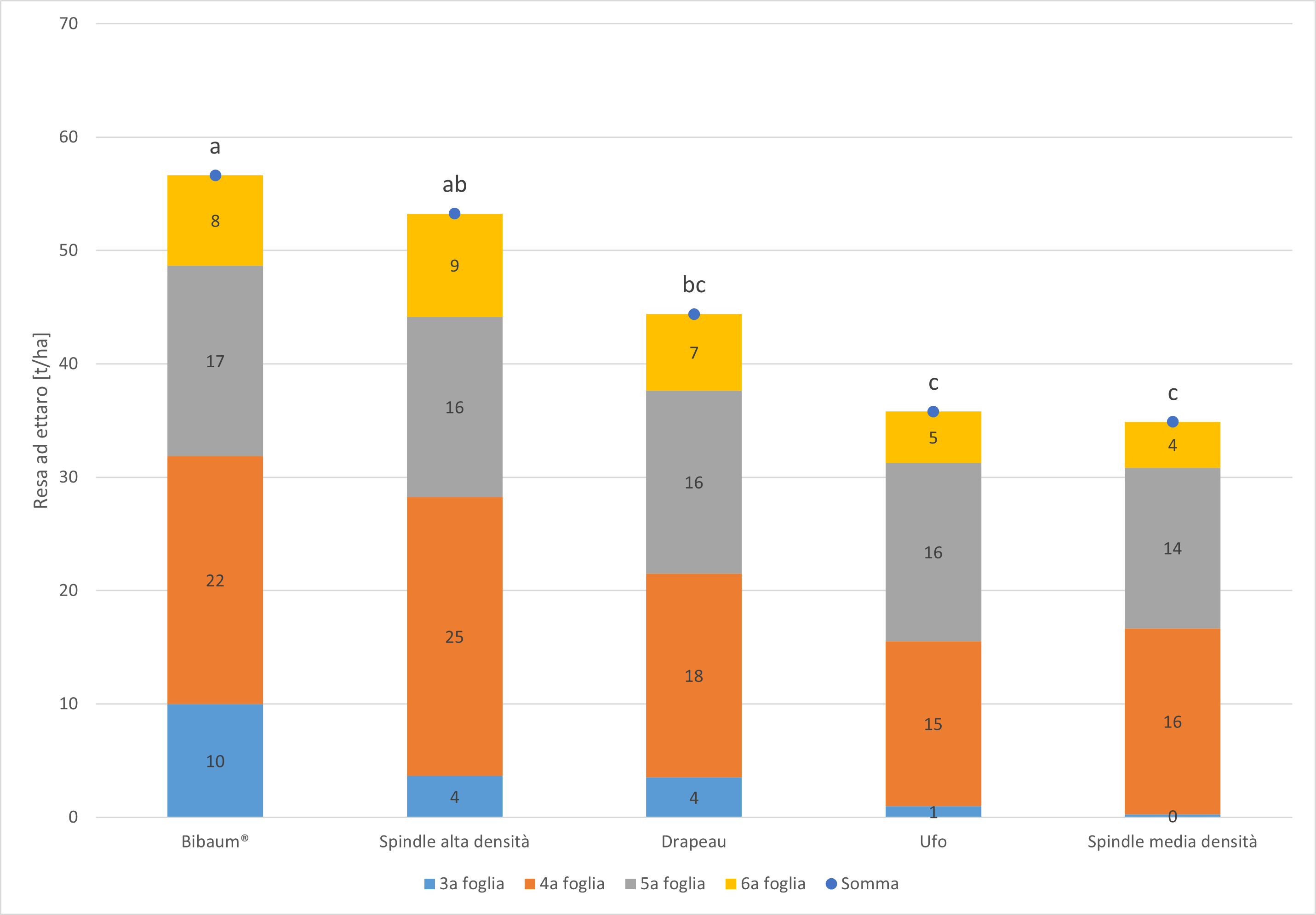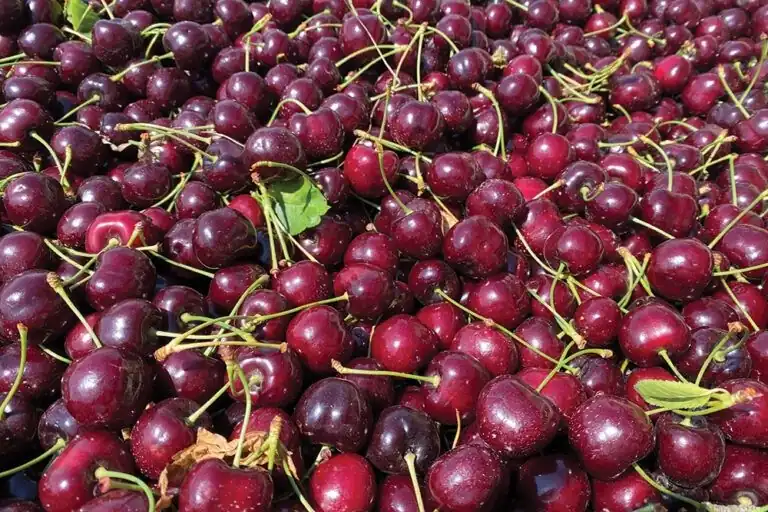An innovative experimental cherry orchard was established in April 2018 at the state-owned Fragsburg farm in Merano, located at an altitude of 700 m above sea level. The objective of this experiment is to compare different training systems to determine which is the most efficient for modern cherry growing. The training systems tested include:
- Spindle with medium planting density
- Spindle with high density planting
- Bibaum®
- UFO
- Drapeau
For each system, 3 replications of 6 plants each were planted. The variety used is Kordia grafted onto Gisela 5, which represents the standard in the reference area. The planting spacing was chosen considering the future development of the different training forms. The entire orchard is protected by a hail net, a rain cover, and an insect net to ensure accurate experimentation.
| Table 1 - Distance between plants and number per hectare of training systems |
|---|
| Training system | Distance between plants | number of plants per hectare |
| Spindle medium density | 1.50 | 1714 |
| Spindle high density | 1.00 | 2571 |
| Bibaum | 1.20 | 2143 |
| UFO | 1.20 | 2143 |
| Drapeau | 1.50 | 1714 |
In the first two years, the focus was on the growth of the plants. Starting from the third year, data for each replication was collected concerning the following parameters:
- Average weight of the fruit [g]
- Average yield per plant [kg]
- Distribution of size classes [%]
- Soluble solids content [°Brix]
- Firmness [Durofel Index (ID)]
- Color [Cielab]
The collected data was analyzed using the General Mixed Model in IBM SPSS Statistics 27, with LSD post hoc tests. The yields per hectare presented refer to a net area of 9,000 m², considering the space occupied by headlands and insect nets.
The aim is to compare in the long term the bi-dimensional and tri-dimensional training systems, simulating the average lifespan of a commercial cherry orchard (20 years). Key factors in the evaluation include the speed of entry into production, the cumulative yields, the fruit quality, and the longevity of the orchard.
The revolution of cherry growing in Trentino-Alto Adige
Since the 1990s, cherry growing in Trentino-Alto Adige has undergone a significant revolution thanks to the introduction of dwarfing rootstocks and the adoption of the spindle system. These new orchards, initially with wide spacing of 4 x 2.5 m (now standardized to 3.5 x 1.8 m), have allowed for more efficient management of the tree canopy and partial mechanization of cultural practices.
Today, the challenge lies in further development to meet the needs of the present. An efficient cherry orchard must address the risks of climate change and socio-economic factors while offering a sustainable, high-quality, and economically advantageous product. Additionally, it must optimize the balance between inputs (such as area and labor) and outputs (production, quality, and income).
In this context, the choice of the training system (such as Bibaum, spindle, UFO, etc.) and planting spacing is crucial for the planning of a new orchard. Elements such as the precocity of production, cumulative yields over the life of the orchard, and quality factors (such as °Brix, acidity, size, color, and firmness) will become increasingly central to the business balance.
 Image 1: Cumulative yields in the 3rd-6th leaf period broken down by training system (Kordia/Gisela 5).
Image 1: Cumulative yields in the 3rd-6th leaf period broken down by training system (Kordia/Gisela 5).
The first to enter production
During the first six years of the experimental cherry orchard, the Bibaum® and high-density spindle systems showed significantly higher cumulative yields per hectare compared to other training systems. The Drapeau system occupied an intermediate position, while the UFO and medium-density spindle systems showed a slower entry into production.
In terms of quality, the Bibaum® and high-density spindle systems produced the highest yields in the most profitable size classes, although this trend was not always statistically significant. However, the high productivity of these two systems did not compromise quality in terms of size, sugar content, firmness, and color.
Concluding Observations
The results of the experiment indicate that the speed of entry into production is favored by the number of plants and/or productive axes per hectare and the availability of mature wood. The quality of production is ensured by low yields per plant, which overall allow for high yields per hectare.
It is important to note that these considerations only pertain to the initial production phase of a young cherry orchard and do not provide information on the longevity of the orchard or the behavior of different training forms in the long term. Further experimentation will be necessary to explore these aspects as well.
Source: Rivista di Frutticultura e Ortofloricoltura
Images: Rivista di Frutticultura e Ortofloricoltura, SL Fruit Service
Cherry Times - All rights reserved












